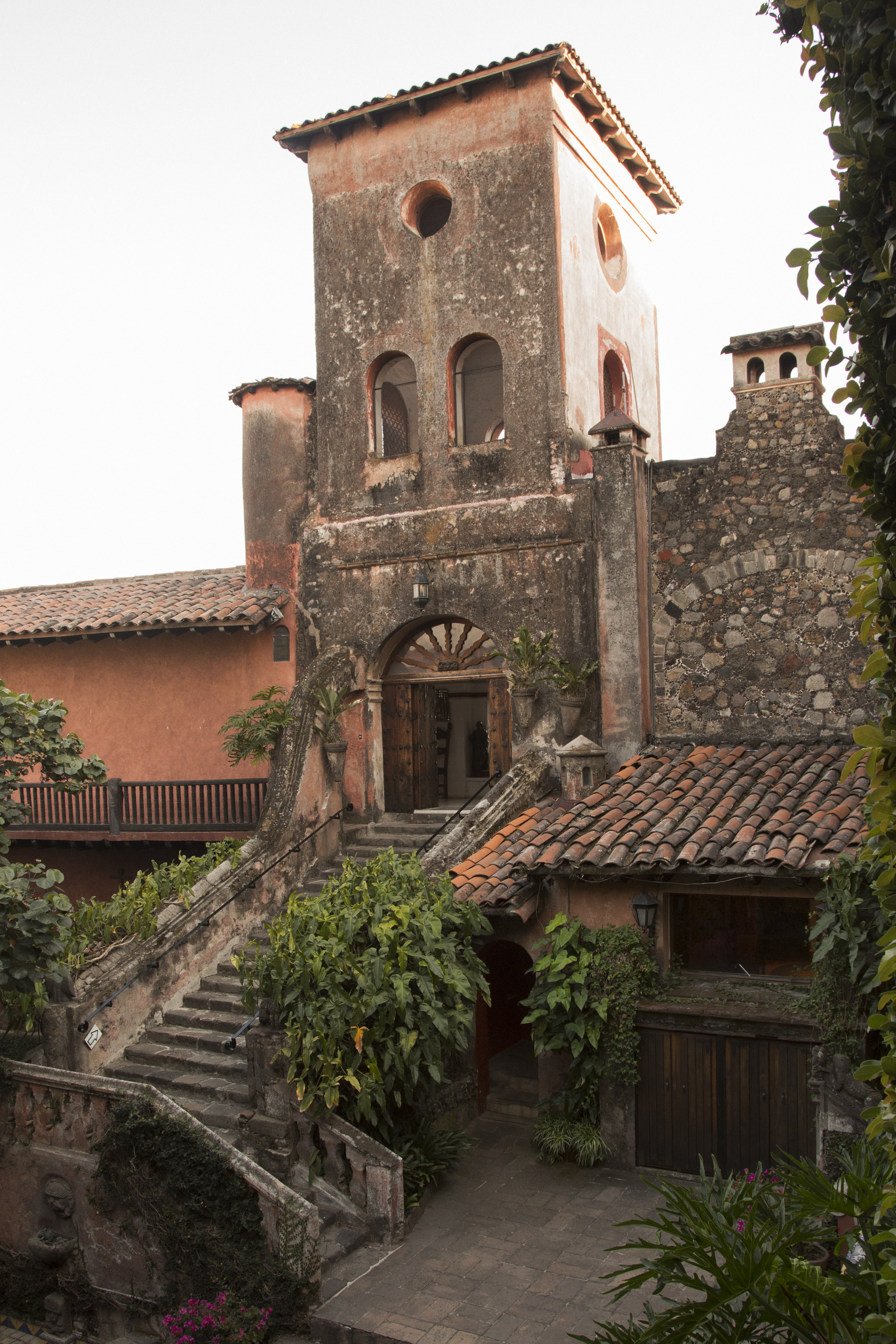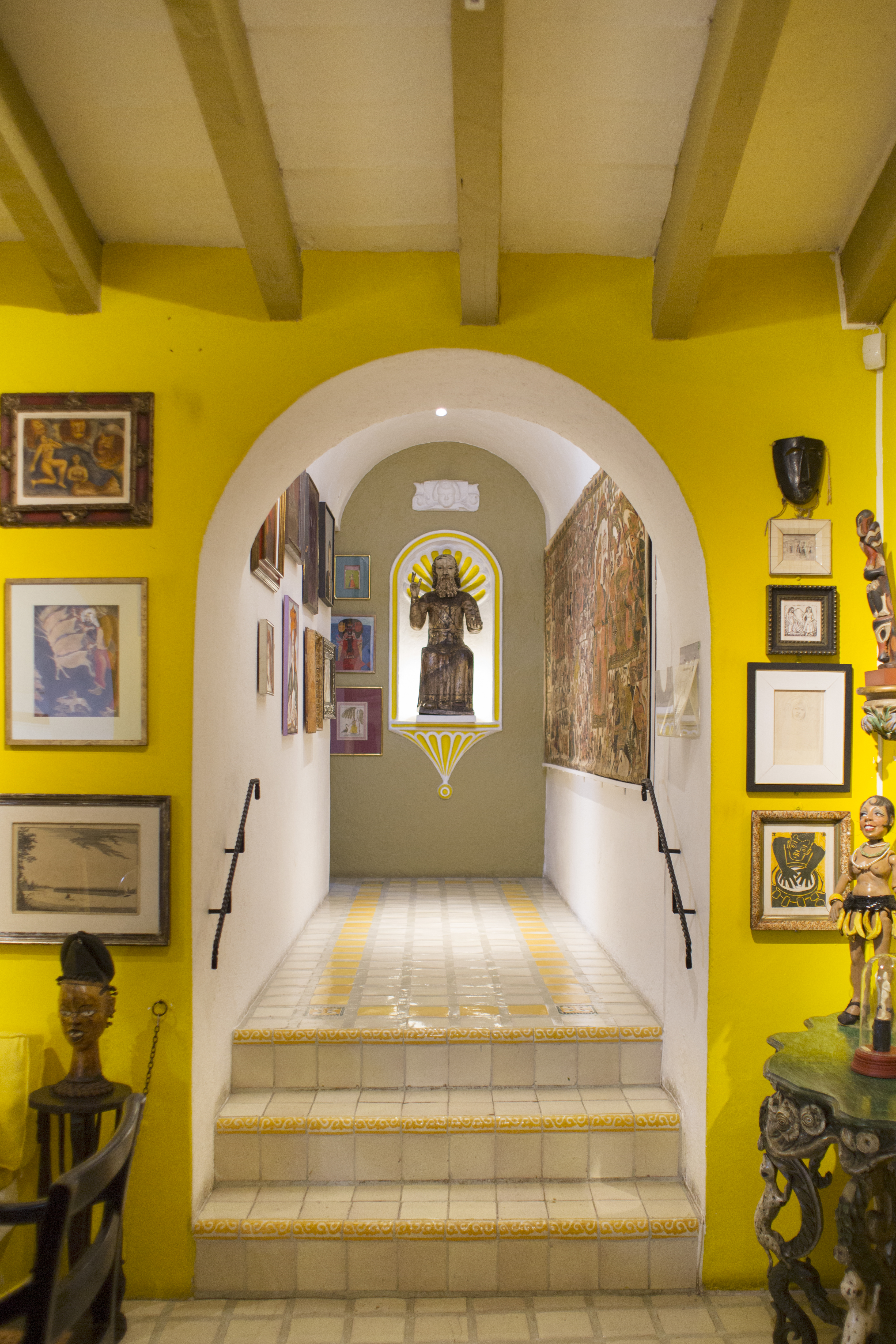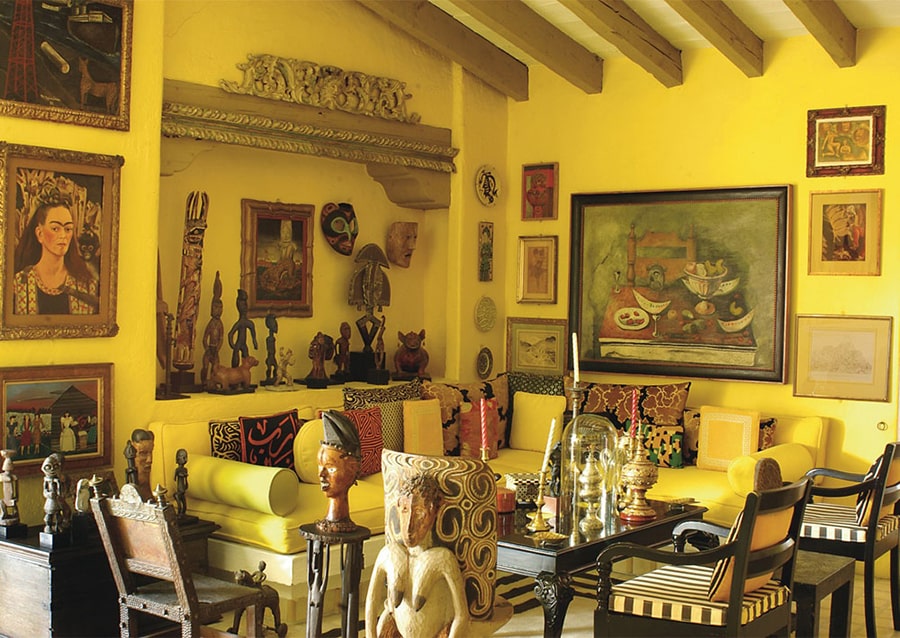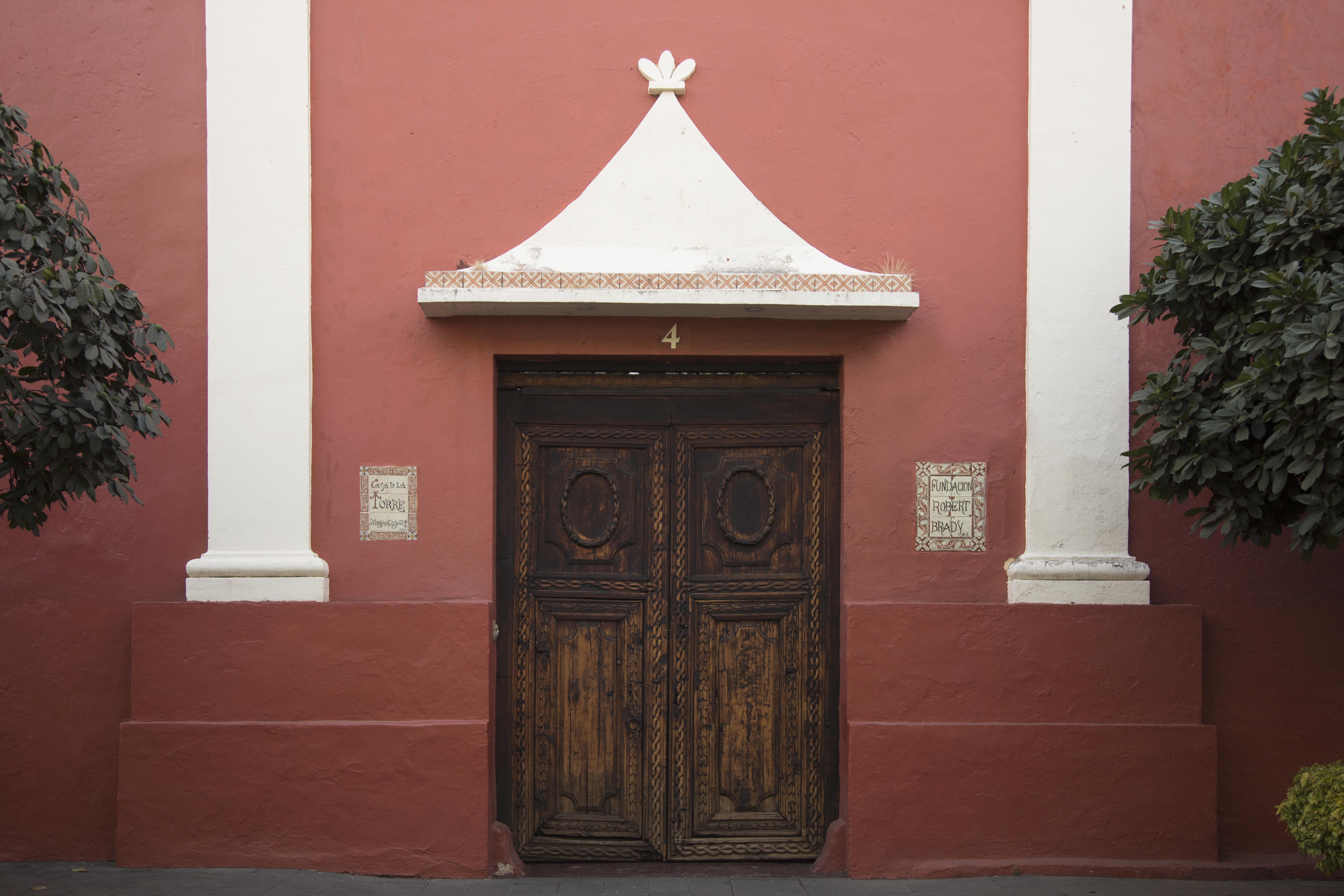Visit and collection
MUSEUM
VISIT
Schedule
Tuesday to Sunday
10:00 a 18:00 horas
Address
Netzahualcóyotl 4
Col. Centro | Cuernavaca, Morelos | México
C.P. 62000
777 318 8554
info@museorobertbrady.com
reservaciones@museorobertbrady.com
TICKETS
Prices
General Entrance:
$70.00
Students, teachers and INAPAM
(with valid credential)
$50.00
Additional service:
Guided tours in Spanish and English. Prior reservation required. Maximum 12 participants. $300.00 MXN. Does not include museum admission.
GET TO KNOW US
MUSEO ROBERT BRADY
A WORLD TO DISCOVER AND ENJOY
By María Celia Fontana Calvo
The Robert Brady Museum is one of the most iconic cultural spaces in Cuernavaca. This house-museum, located behind the cathedral in what is known as the Casa de la Torre, represents a modern and international epitome of an especially emblematic architectural ensemble in the city, initially constructed in the 16th century as a Franciscan convent.
The charismatic Casa de la Torre was remodeled by the second bishop of Cuernavaca, Francisco Plancarte y Navarrete (1898-1911), at the beginning of the 19th century to serve as an astronomical observatory. The feature that characterizes and gives the house its name, the slender tower rising above the main entrance, was built during this time. However, due to subsequent historical events, the property remained in ecclesiastical hands only briefly. After the Cristero War (1926-1929), it was disentailed and passed into private ownership, first belonging to George Thatcher and later purchased by Robert Brady in 1961. The American artist and collector, born in Iowa in 1928, made it his last residence and renovated it to house his extensive art collection from around the world. Brady passed away in 1986, and four years later, after essential restoration and reorganization – aiming to respect the “artist’s eye” as much as possible – the house was opened to the public as the Robert Brady Museum.
Each corner of the museum reflects Robert Brady's profound desire to learn from art through direct contemplation and enjoyment. His appreciation of the genuine value of each piece, regardless of its era, origin, or creator, and his intent to make this essence accessible to future artists and art lovers, is evident. The selected pieces are unique representatives of beauty, expression, and diverse influences. They decorate and set the ambiance, yet they also unabashedly reveal something of the person who acquired them, giving them a special significance in a precise place, making both the container and the contained unique works.
Brady called the Gallery his collector's room. Here, he gathered a multitude of artistic pieces from various cultures worldwide. The "atecocolli" pieces on the central table symbolically invite the gathering of different peoples. In an atmosphere of utmost freedom, akin to another wall of Breton, everything blends and merges to generate novelty and inspiration.
In the series of Mesoamerican and African figures displayed on walls and exhibits, Brady highlights certain pieces and places his own inspired work beside them – his personal contemporary version. The Barnes Foundation, with its famous ensembles, highlights the enormous role of primitive and tribal art in the new aesthetic movements of the 20th century. As a devoted disciple of Dr. Barnes (Philadelphia, 1872–Phoenixville, 1951), Brady conveys similar messages, though only as much as the viewer is capable of perceiving them. Without Barnes's didactic approach, his associations are more subtle, often playful – with elements of innocence, mischief, and even riddles. The long wall of the Gallery is presided over by an abstract face tapestry created by Brady himself. It exemplifies the earlier lesson on modern art, yet also serves a specific purpose in the space. With its simple yet intricate forms, it is as formidable as other elements in the room (lions, masks, monstrous figures) that aim to symbolically protect the gallery.
Throughout the house, Brady’s attention to detail and his appreciation for the unique qualities of each piece are evident. In human figures, he focuses on positions, gestures, and, especially, facial expressions. He revels in the pieces, bringing them to life by interacting with them as if they were characters. Are the ceramic figures in the Cantina – from San Agustín Oapan, Guerrero – not like theatrical actors in La Familia? Brady’s portrait presides over the central niche of a group composed of his friends: Paula Laurence, Cantinflas, María the cook (with a child in her arms), and Peggy Guggenheim. They all seem happy alongside papier-mâché dolls cast as cabaret performers, masks, devils, and even skeletons. Through various objects, Brady humorously illustrates the effects of alcohol, in a playful style typical of Mexican culture – from joy and festivity to excess and, ultimately, death. A fatal threat also looms in one section of the Yellow Room on the upper floor. Below the oil painting Yucatán with tiger by Roberto Montenegro (c. 1930), Brady recreates a similar scene with three-dimensional pieces, set in a pre-conquest era. In this composition, what terrifies the people isn’t a feline, as in the painting, but rather two ravenous xoloitzcuintle dogs. A double-faced figure looks around in panic, while tiny figures gesture in terror at the massive, fierce dogs.
Brady is, above all, a decorator-collector. In his carefully designed spaces, two essential elements stand out: color and light. His fascination with these elements likely first led him to Venice, where he lived for six years, and later to Mexico. Like Luis Barragán and some of Mexico’s best architects of the 20th century, Brady incorporated color into the walls of his rooms to imbue them with personality and create specific atmospheres. With color as the protagonist, he designed the Oriental Guest Bedroom on the upper floor, accessible from the vibrant Yellow Room with its black counterpoint. The intricate, curvilinear decor of the bedroom features a broad palette of pinks, reds, and purples. This chromatic warmth conjures an atmosphere full of exotic music, dance, rich aromas, spicy flavors, and relaxing pleasures, all with the chic, elegant, and daring touch of the house itself – and of the person for whom Brady prepared this space: the Afro-American artist turned French citizen, Josephine Baker (St. Louis, 1906 – Paris, 1975). Color also names the main bathrooms: the Yellow Bathroom, on the ground floor, covered in antique Puebla tiles – white, black, and yellow – and the Green Bathroom upstairs, dominated by the green walls and blue Puebla talavera on furniture and fixtures. Brady demonstrates that without light, there is no color, composing chromatic circles in some of the house’s main windows. Especially striking due to its location is the one in the Graphic Art Room, where selected pieces – including colorful Murano glass bottles – are displayed in front of a radial, semicircular iron grille that Brady acquired from an old mansion in Mexico City to achieve the desired effect.
Every museum presents challenges and offers opportunities. Cultural tourism is increasingly linked with non-formal education. At the Robert Brady Museum, visitors can appreciate one of the most diverse and interesting collections assembled by a foreigner passionate about Mexican art and culture: a cosmopolitan and somewhat eccentric artist who left his best legacy in the Casa de la Torre, inviting everyone who embarks on the exciting journey of knowledge.

Casa de la Torre. Cuernavaca, Morelos, Robert Brady Museum.

Yellow Room of Casa de la Torre, Cuernavaca, Morelos, Robert Brady Museum.

The Print Gallery, Robert Brady Museum.


